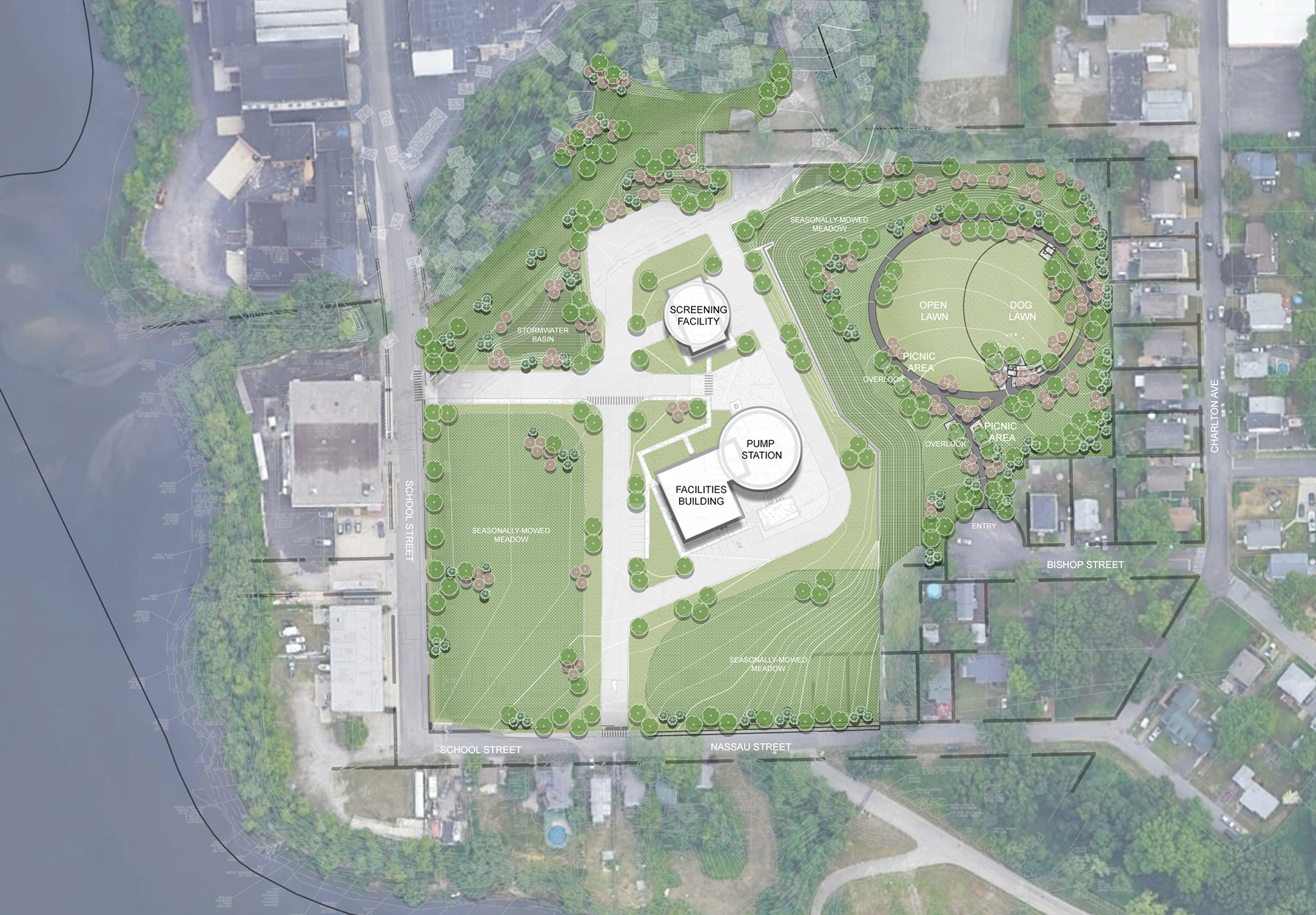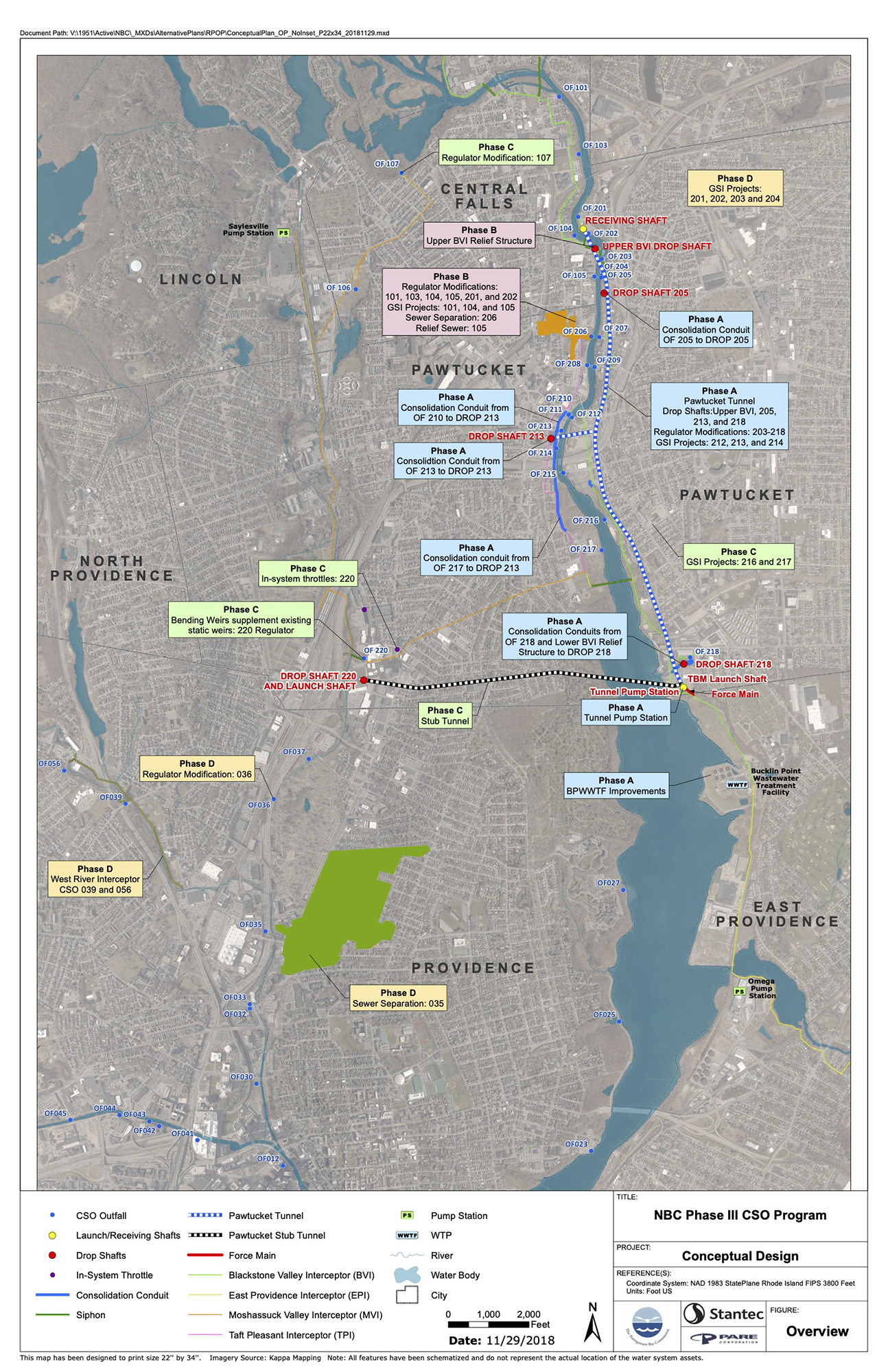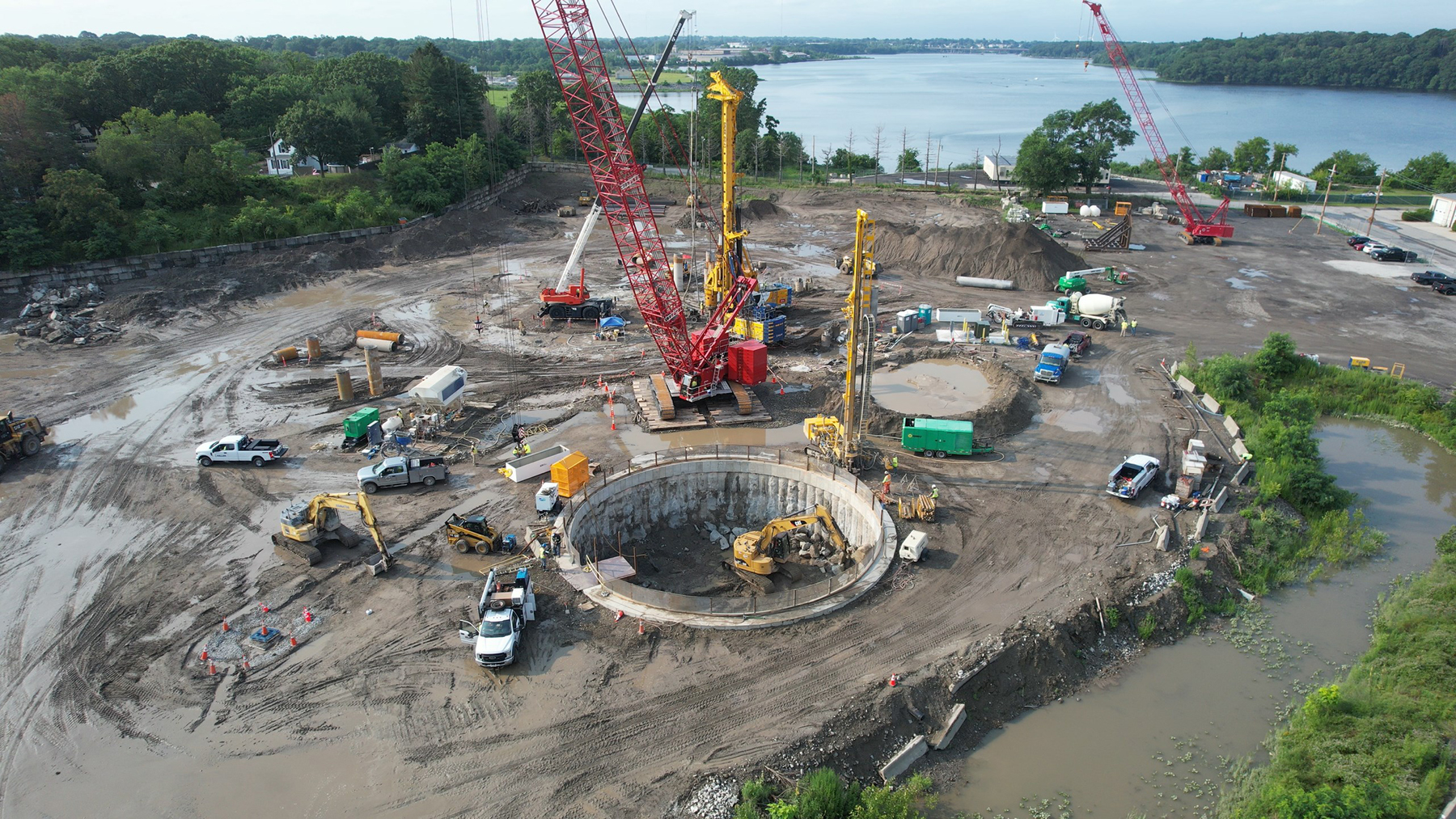By Jay Landers
During the past decade, the Narragansett Bay Commission has reduced by nearly two-thirds the combined sewer overflows to critical waterways in Rhode Island. Much of this reduction resulted from the 2008 completion of a 3 mi long tunnel capable of storing and conveying millions of gallons of CSOs to a wastewater treatment facility. Earlier this year, the NBC embarked on the next phase of its ambitious, long-term effort to reduce CSOs — the construction of a second tunnel.
Upon its completion in 2027, the 2.2 mi long Pawtucket Tunnel and its related components will enable the commission to improve regional water quality even further.

The NBC collects and treats wastewater and stormwater from 10 cities and towns in Rhode Island, servicing 40% of the state’s population. To this end, the commission owns and operates the Bucklin Point Wastewater Treatment Facility in East Providence and the Field’s Point WWTF in Providence.
The Bucklin Point WWTF provides secondary treatment and nitrogen removal for flows up to 46 mgd and provides primary treatment and disinfection for wet weather flows up to 116 mgd. The Field’s Point facility provides secondary treatment and nitrogen removal for flows up to 77 mgd and can conduct primary treatment and disinfection of another 123 mgd of wet weather flows.
‘Phenomenal’ results
Under an agreement originally entered into with the Rhode Island Department of Environmental Management in 1992, the NBC committed to a three-phase program of improvements intended to reduce the volume and frequency of CSOs entering the Narragansett Bay. Completed in 2008, Phase I of the CSO program included the construction of the initial tunnel, a tunnel dewatering pump station, and seven drop shafts. Completed in 2014, Phase II consisted of two interceptors that convey flows to the existing tunnel as well as two sewer separation projects and a constructed wetlands facility.
The projects completed as parts of phases I and II have greatly decreased the extent to which overflows are entering local waterways. “To date, we’ve had a reduction in CSO volumes throughout our service area of about 60%,” says Jamie Samons, the public affairs manager for the NBC. “About 1.1 billion gal. per year is captured in our Phase I tunnel.”
This decrease in overflows has had “pretty phenomenal” results in terms of water quality in the Upper Narragansett Bay, directly benefiting the locally important shell-fishing industry, Samons notes. “Shell-fishing days have increased by about 80 days per year,” she says. “Shell-fishing grounds that have been closed for 70 years are now open.”
The decline in CSOs has improved conditions for humans and marine life. “We’ve had a dramatic reduction in bathing beach closures since the first two phases came online,” Samons says. “We’re also seeing lots of fin fish coming back to the upper bay and in the Providence River and lots of juvenile menhaden, bluefish, and stripers coming up to eat those fish. It’s been pretty exciting.”
However, further improvements in water quality within the Narragansett Bay and its major tributaries are expected. Upon completion of Phase III in 2041, the NBC anticipates a 98% reduction in CSOs from its collection system, Samons says. “That’s pretty dramatic,” she notes.
All told, overflow events will decrease to an average of four per year. Before the start of the CSO program, the NBC’s system used to experience 80-90 overflows annually, depending on rainfall conditions, Samons says.
Phased implementation
To improve the affordability of the CSO program for the NBC’s ratepayers, Phase III has been divided into four subphases, each of which has different deadlines for completion. The largest of these is IIIa, which includes the new 2.2 mi long tunnel that will pass beneath the communities of Pawtucket and Central Falls and largely parallel the Seekonk and Blackstone rivers.

Phase IIIa also includes a 34.5 mgd pump station, four drop shafts and approximately 4,000 ft of consolidation conduits to convey runoff to the tunnel, a launch shaft and a receiving shaft for the tunnel boring machine that will be used to construct the tunnel, regulator modifications, the construction of $10 million worth of green stormwater infrastructure, and the design of the facilities to be constructed as part of Phase IIIb. Totaling $813 million, Phase IIIa is to be completed in 2027.
The tunnel and its associated features are designed to accommodate flows from a three-month storm event, which equates to 1.65 in. of rainfall in six hours.
Having a 30 ft finished diameter and ranging in depth from 115 to 155 ft, the approximately 11,600 ft long tunnel will have a capacity of 58.5 million gal., says Melissa Carter, P.E., M.ASCE, a vice president for Stantec and the lead designer and program manager for Phase III. The Pare Corp. and MWH Constructors are supporting Stantec in these efforts.
Construction has begun
In September 2020, the NBC awarded a $450 million design-build contract for the tunnel, the 80 ft diameter pump station shaft, the 60 ft diameter launch shaft, the 36 ft diameter receiving shaft, and the drop shafts to CB3A, a joint venture comprising Civil and Building North America Inc., Barletta Heavy Division Inc., and AECOM.
Construction began in late March, says Pete Williamson, the deputy project manager for Barletta Heavy Division. “We’ve finished the earth supports at the tunnel pump station shaft and the launch shaft,” both of which are located at a single site in Pawtucket, Williamson says. “We’re presently digging the launch shaft.”
Tunnel construction is scheduled to begin in summer 2022, Williamson says. Manufactured by Herrenknecht, the dual-mode TBM that will be used to mine the tunnel can operate in both the open mode and the earth pressure balance closed mode, he notes.
Tunnel construction will proceed predominantly through the Rhode Island formation, which consists mainly of gray sandstone, siltstone, and shale. However, varying geological conditions along the tunnel alignment necessitated an extensive geotechnical investigation.

“The geology in this area is frequently called ‘consistently inconsistent,’” Carter says. In addition to soil borings, the geotechnical investigation included the use of seismic refraction, in which seismic waves are used to determine the approximate depths of soil and rock along the alignment. “By doing the geophysical survey, we were able to get a good idea of what the overall rock surface profile was under the ground,” Carter says. In this way, the design team ensured that the alignment would have sufficient rock cover above the tunnel, she notes.
Another contractor will be hired to fit out the pump station shaft and convert the launch shaft into a screening facility that removes solids and floatable debris from flows about to enter the pump station. The pump station will include four vertical centrifugal-type pumps with variable-frequency drives to remove most of the water from the tunnel, Carter says. Two 3 mgd pumps will be used to remove water volumes that are too small to be handled by the larger pumps.
Extensive modeling
Significant hydraulic and physical modeling was conducted to ensure that the many features to be added as part of Phase III would meet or exceed expectations, Carter says.
“We did extensive flow monitoring in the existing system to get a good understanding of how the system works today,” she says. In addition, lidar technology was used to map the surface of the entire service area. The data then were incorporated in the integrated catchment model that was used to analyze the performance of hydrologic conditions at the surface as well as hydraulic conditions in the subsurface facilities. “When we simulated storm events in the model, we had a pretty good surface map for understanding the flow over the surface and the timing of it actually entering the interceptors and the collection system,” Carter says.
Computational fluid dynamic modeling was used on the design of the pump station and other “sensitive structures” to optimize their performance, Carter says. Meanwhile, physical models of the pump station and the largest drop shaft were constructed and analyzed by Alden Research Laboratory Inc. at its facility in Holden, Mass. “With all of that modeling, we were able to tweak our designs and make everybody feel confident that these large structures are going to perform as intended,” she notes.
Along with ensuring proper system performance, the extensive modeling helped the design team reduce project costs, Carter says. “If we design the system so that we’re efficiently conveying flow into the tunnel as quickly as possible, we can significantly reduce the CSO overflows and also minimize the cost of these big structures,” she says.
Green infrastructure’s role
Under the terms of its consent agreement, the NBC also is required to implement $40 million worth of green stormwater infrastructure as part of Phase III. Types of such infrastructure implemented to date include underground infiltration chambers, sand filters, bioretention basins, and tree box filters, says Kathryn Kelly, P.E., the CSO program manager for the NBC.
Like the tunnel and its components, the green infrastructure elements are being designed to treat, at a minimum, the runoff volumes from a three-month storm, Kelly says. However, any reductions in runoff associated with the green infrastructure projects do not count against what the tunnel system will have to accommodate.
Essentially, the green stormwater infrastructure is the “icing on the cake” for Phase III, Carter says. By storing and infiltrating stormwater, the green infrastructure leaves more room in the tunnel “to store more of the flow from the sewers instead of runoff,” she notes.
To be completed in 2031 at an estimated cost of $28.5 million, Phase IIIb includes a sewer separation project, various collection system improvements, and additional green infrastructure facilities. The $165 million Phase IIIc, due to be finished in 2037, will entail the addition of more green infrastructure and the construction of a stub tunnel to convey flows to the main tunnel. To be completed in 2041 for $83.5 million, Phase IIId will involve the construction of an additional interceptor and more green infrastructure.



